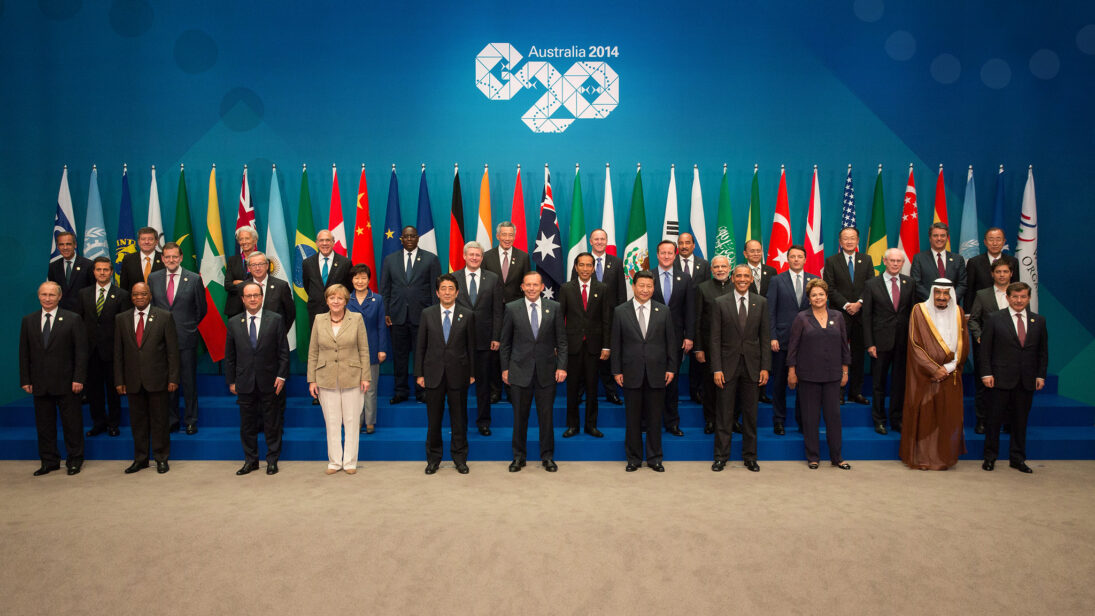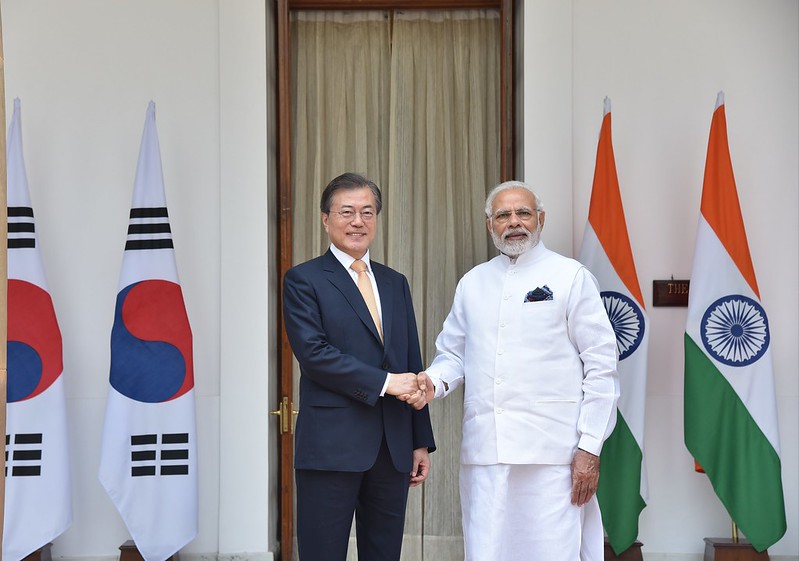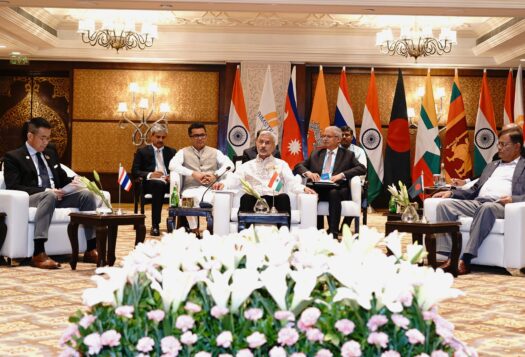
On December 8, 2023, the United States and the Republic of Korea (ROK) issued a joint statement declaring a Trilateral Technology Dialogue with India focusing on critical and emerging technologies that will be held in the first quarter of 2024. The unique, but not unlikely, trilateral partnership is expected to expand collaboration on clean energy and semiconductors, instituting India and ROK’s technology dominance in the Indo-Pacific. The joint statement has further strengthened this partnership out of the mutual motive of countering an expansionist China. This comes after India recently engaged in a succession of agreements with technology giants, including the U.S. and Japan, intended to incentivize India’s public and private investment in critical technologies. India factors into the U.S.-ROK alliance as a democracy with similar goals concerning critical and emerging technologies, given its expanding domestic market, its aspirations to become a semiconductor pioneer, and its relationship with Korea as a regional partner with shared democratic and sovereign values.
The unique, but not unlikely, trilateral partnership is expected to expand collaboration on clean energy and semiconductors, instituting India and ROK’s technology dominance in the Indo-Pacific.
The Trilateral Technology Dialogue between India, the U.S., and the ROK adds to the security, stability, and prosperity of the Indo-Pacific by creating a forum for allies in the region to work on a shared vision for their defense and technology sectors. While New Delhi is a member of the Quadrilateral Security Dialogue (Quad) and participates in its technological pursuits, the India-U.S.-ROK Trilateral Technology Dialogue provides a unique opportunity for collaboration: the forum will allow its members, particularly India, to reap significant benefits while avoiding the geopolitical pitfalls of collaboration through the Quad.
Areas of Strategic Convergence for India
The joint statement identifies new platforms of collaboration in the areas of artificial intelligence (AI), batteries, clean energy, biotechnology and biomanufacturing, semiconductors, digital connectivity, and information communication technology. It also outlines a strategic plan of action in each of the identified sectors. China’s efforts to monopolize critical scientific industries for economic and civil-military purposes and to dominate its supply chains, have had a significant impression on India’s scientific-strategic outlook. Apprehensive of China’s lead in crucial tech sectors, India has been striving to elevate its indigenous technology capacity with endeavors like Make In India and Chips to Startup (C2S). Each of the areas of convergence highlighted in the statement coincides with India’s geopolitical ambitions to pose a robust challenge to the Chinese presence in the region.
Taking cues from technology giants such as the U.S., Taiwan, and Korea, India aims to reduce dependence on technology imports by aligning its domestic policies, private sector capacities, and geopolitical goals to become a major actor in semiconductor production. In line with the Indian chip strategy to lure foreign investment and forge partnerships with like-minded nations, this trilateral alliance would aid New Delhi’s self-proclaimed quest to become the next global chip powerhouse.
As India, the U.S., and South Korea pursue a balance of power in the Indo-Pacific against China’s ambitions, AI is set to become another significant player in their defense and security strategies. Innovation and data-sharing within the realms of AI technology may help these allied nations compensate for their heightened fears of China’s military sophistication. This trilateral partnership also highlights biotechnological collaborations, in line with India’s ambition to become a Quad-driven biomanufacturing hub. But for all parties to be equal stakeholders in this trilateral initiative, this proposed alliance must also look to join forces in pushing Washington to attempt to ease the U.S. export control laws that currently curb technological collaboration with India.

United by a shared goal to contain China, New Delhi has already collaborated with the U.S. on a number of grand space, defense, and technology initiatives, like the United States-India Artificial Intelligence Initiative (USIAI) and U.S.-India Initiative on Critical and Emerging Technology (iCET). India has also signed a number of deals and MoUs with South Korea to boost science and the economy and establish dominance in the Indo-Pacific. Having reached precursory scientific and industrial research agreements in the policy and academic sectors, Seoul has discovered that New Delhi could be an opportune collaboration partner. In the future, focusing on Small and Medium Modular Reactors and green energy may help the trilateral dialogue address the climate concerns and net zero goals pledged at COP28.
With aims to increase the synergy between the government, academia, technology startups, and the defense industry, the trilateral dialogue will help India reinforce a robust security policy to contest against Chinese endeavors. Such partnerships are only likely to grow stronger while China continues to challenge the territorial security and liberal status quo that benefit these countries.
Challenges and Potential Future Directions
Overlooking certain strategic differences with the U.S. — New Delhi has persisted in maintaining its strategic autonomy over its ties and trade with Moscow and questioned tariff restrictions associated with partnering with the U.S. — India is still an attractive partner for technology exchanges with Seoul and Washington to counter Beijing.
Given the high capital investment potential of India’s accomplished highly-skilled talent pool, and a large market of low-cost labor, India will be an attractive destination to scout scientists and engineers for the acceleration of AI development in addition to the workers necessary to package and test semiconductors. Such initiatives urgently require regulatory skill-building, so education, research, and training collaborations under this trilateral alliance will be key.
Despite the promise of the joint statement, India’s inconsistent semiconductor policy and high import tariffs may prove to be challenging bottlenecks in this partnership. Further, unclear privacy and security regulations and unattractive intellectual property regimes in India may also create challenges for stakeholders and foreign investors for effective adoption of AI technology. India must implement a stable and robust policy structure, with a definitive roadmap and considerations for specific well-identified vendors, to overcome the initial manufacturing, tariff, and export challenges.
A separate trilateral dialogue between India, the U.S., and the ROK ensures equal stakes and obligations in technology-sharing without the added baggage of requiring India to relinquish some of its traditional policy independence,
A separate trilateral dialogue between India, the U.S., and the ROK ensures equal stakes and obligations in technology-sharing without the added baggage of requiring India to relinquish some of its traditional policy independence, which would likely be the perception if such policies were carried out under the Quad instead. Sharing similar climate and technology development goals, Japan is another potential ally to counter China and bolster dominance in the region. If Japan partakes in this eventual technology dialogue-turned-partnership, the alliance will have the benefits of a technology collaboration with fewer of the geopolitical liabilities of the Quad security partnership.
To make the most of this trilateral technology dialogue, the alliance should look to collaborate on the responsible use of AI in surveillance and intelligence sharing, in addition to developing a solid international technology infrastructure and investment model to boost innovation and economic health. This alliance would also benefit from strengthening supply chain resiliency and improving cybersecurity infrastructure by identifying shared data protection standards. As China maintains a presence in the space race, the alliance could consider cooperating on space ventures, especially given India’s recent space and security successes. As China continues to pursue dominance over Indo-Pacific, support from the U.S. and ROK will help India grow its defense and technology sectors and bolster its position as a growing regional power.
Also Read: Nuclearization Debates: What Can South Korea Learn from South Asia?
***
Image 1: 2014 G20 Summit via Flickr
Image 2: PM Modi with Former President Moon via Flickr


